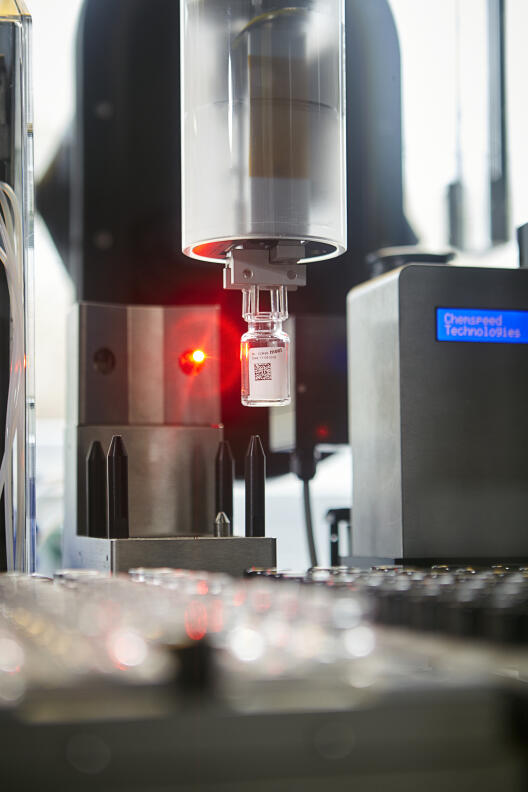Reactions & Mechanisms
Recognizing, understanding and optimizing the complex chemical reactions and mechanisms in a battery cell: These are the aims which our researchers have in the Reactions & Mechanisms competence area within the Analytics & Environment research group. The reaction and mechanism studies contribute equally to basic research and applications-oriented research.
Focus on the Electrolyte

The electrolyte plays a key role in battery cells – and therefore in our research too. It is responsible for the internal transportation of ions between the two electrodes and is in contact with all the active and inactive cell components, which means it is involved in almost every reaction in the cell. The MEET researchers have already developed numerous qualitative and quantitative methods for demonstrating the existence of previously unknown reactions in the electrolyte. An HILIC-ICP-MS method was developed, for example, to determine electrolyte decomposition products.
With their work, they not only have a decisive impact on understanding the aging of electrolytes in international battery research, but also provide decisive knowledge for battery development. Intense collaboration in the field of electrolyte research – such as with Helmholtz Institute Münster – results in many new insights and approaches.
The team in this competence area carries out research not only into the reactions of electrolyte components, but also into the dissolving, distribution and separation of metals in the current collectors and the electrode materials. In order to arrive at a more detailed understanding of the processes taking place inside the battery, the researchers use a broad portfolio of methods. Metal speciation, tracking the lithium-ion transfer by means of 6Li isotope-enriched materials, and imaging processes for electrode surfaces are just some of the often highly specialised methods used. The team attaches great importance to observing reactions and mechanisms in one context: In order to generate extensive knowledge, interactions with the electrochemical properties, states and processes of and in the battery cell are all equally included in the research work done.

